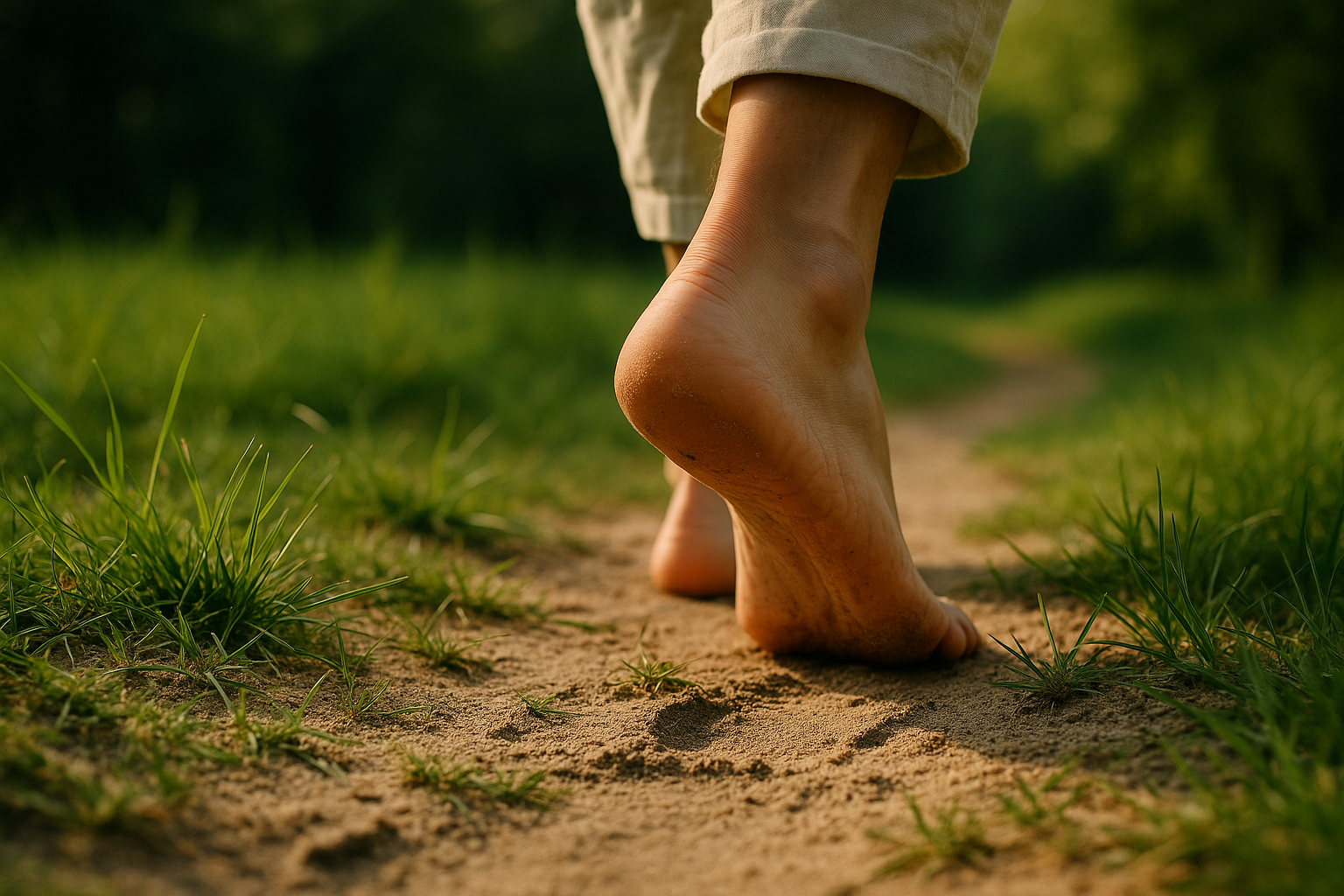Unveiling the Health Potential of Grounding: A Walk Barefooted for Wellness
As the sun sets, imagine walking barefooted on a dewy, vibrant green grass, your feet touching the cool earth. Ever wondered if this simple act could enhance your health and well-being? This is the essence of Grounding or Earthing, a wellness practice that is rapidly gaining recognition in the scientific community. Let's explore the health benefits of Grounding, its scientific credibility, and practical ways to incorporate it into your daily routine.

Grounding: A Historical and Scientific Overview
Grounding, also known as Earthing, is a practice that involves direct contact with the Earth’s surface, usually by walking barefoot. While it may appear as a new-age wellness trend, the concept of Grounding is rooted in ancient practices. Indigenous cultures recognized the Earth as a powerful source of healing and well-being, and they integrated Earth-based practices into their daily lives.
Scientific interest in Grounding ignited in the late 20th century when a handful of researchers began to explore its potential health benefits. Today, studies suggest that Grounding may reduce inflammation, improve sleep, enhance mood, and boost overall well-being.
Grounding in Today’s Health and Wellness Trends
In an era where technological advancements often disconnect us from nature, Grounding offers a simple and accessible way to reconnect with the Earth and enhance our well-being. Health experts and wellness influencers are now advocating Grounding as an essential part of a holistic wellness routine.
Scientific studies have backed these health claims, revealing that Grounding can neutralize free radicals, reduce inflammation, improve sleep, enhance mood, and support overall well-being. Despite these promising findings, more extensive research is required to fully substantiate these claims.
Evaluating the Benefits, Challenges, and Scientific Credibility of Grounding
The benefits of Grounding are increasingly being supported by scientific research. A 2012 review published in the Journal of Environmental and Public Health highlighted Grounding’s potential to reduce inflammation, improve sleep, and enhance well-being.
However, Grounding also faces challenges. Skeptics argue that the health benefits attributed to Grounding could be placebo effects. Moreover, the feasibility of Grounding in urban environments is also a challenge.
Despite these hurdles, the scientific credibility of Grounding is gradually increasing as more studies affirm its health benefits.
Grounding: Practical Insights and Fascinating Facts
-
Grounding can be practiced anywhere with direct access to the Earth’s surface: grass, sand, soil, or concrete.
-
Studies suggest that just 30 minutes of Grounding can have a positive impact on your health.
-
Grounding can be combined with other wellness practices like meditation, yoga, or mindful walking for a holistic wellness routine.
-
Grounding may also improve cardiovascular health by reducing blood viscosity, a major factor in cardiovascular diseases.
Closing Thoughts: Embracing Grounding for Enhanced Well-being
The simple act of walking barefoot on the Earth may offer far more than the pleasure of a natural foot massage. As research on Grounding continues to evolve, it’s clear that this ancient practice holds significant potential for enhancing our health and well-being. By reconnecting with the Earth, we can tap into a powerful source of healing and rejuvenation, fostering a deeper sense of wellness that extends beyond physical health. Grounding caters to our growing need for accessible, natural, and holistic health practices— reminding us that sometimes, the simplest acts can offer the most profound wellness benefits.




